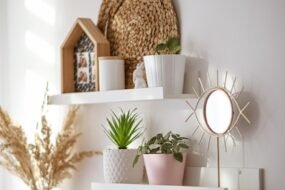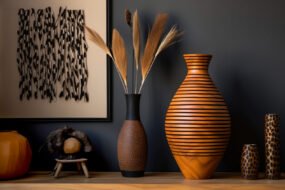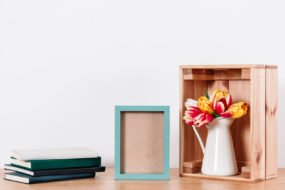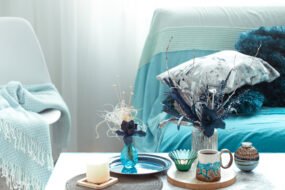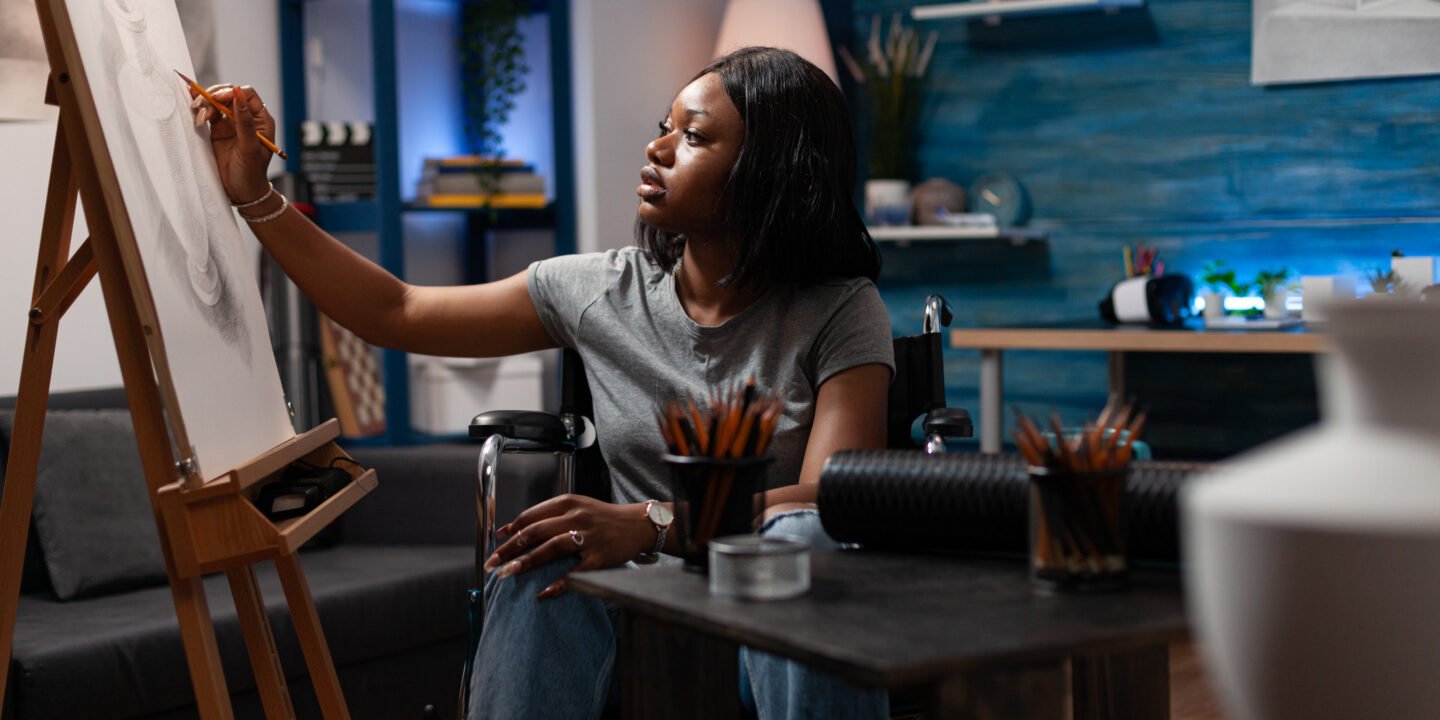
Creating a beautiful and inviting home is an art that combines personal style, functionality, and creativity. Whether you’re moving into a new space or simply looking to refresh your current decor, there are countless ways to elevate your home’s aesthetic. In this blog, we’ll explore creative decor ideas, DIY projects, and design tips that can transform any room into a stylish haven. Let’s dive into the world of home decor and discover how to turn your design dreams into reality!
1. Understanding Your Style: Find Your Decor Identity
Why It Matters
Before diving into decor projects, it’s essential to understand your personal style. This foundation will guide your decisions and help create a cohesive look throughout your home.
Steps to Discover Your Style
- Explore Inspiration: Browse platforms like Pinterest, Instagram, or home decor magazines. Create a mood board of images that resonate with you.
- Identify Common Themes: Look for patterns in the colors, textures, and styles that you’re drawn to. Are you drawn to bohemian vibes, modern minimalism, or rustic charm?
- Take Notes: Jot down key elements that define your style, such as specific colors, materials, and furniture types.
Tips for Defining Your Style
- Personality Reflection: Choose decor that reflects who you are. If you love nature, incorporate earthy tones and plant life.
- Practicality: Consider your lifestyle. If you have pets or young children, opt for durable fabrics and easy-to-clean surfaces.
- Mix and Match: It’s okay to combine styles. A little eclecticism can add character and warmth to your home.
2. Color Your World: The Power of Paint
Why Paint?
Paint is one of the most cost-effective ways to transform a space. A fresh coat can instantly change the mood of a room and highlight your chosen decor style.
Project Idea: Accent Walls
Materials Needed:
- Paint (your chosen color)
- Painter’s tape
- Paintbrushes and rollers
- Drop cloths
Steps:
- Choose Your Wall: Select a wall that you want to highlight—often behind a sofa or bed works best.
- Prep the Area: Move furniture away and lay down drop cloths to protect your floors.
- Tape Edges: Use painter’s tape to outline the area you’ll be painting, ensuring crisp lines.
- Paint: Apply the paint with a roller, using a brush for edges and corners.
- Let Dry: Allow the paint to dry completely before removing the tape.
Color Tips
- Light Colors: Make small spaces feel larger and brighter.
- Dark Colors: Create a cozy and intimate atmosphere in larger rooms.
- Bold Choices: Don’t be afraid to use vibrant colors as accents—cushions, curtains, and artwork can all make a statement.
3. Furnishing with Flair: Selecting the Right Pieces
The Role of Furniture
Furniture is not only functional but also sets the tone for your home’s decor. Choosing the right pieces can enhance your style and improve comfort.
Tips for Selecting Furniture
- Scale and Proportion: Ensure your furniture fits the scale of the room. Oversized pieces can overwhelm a small space, while too-small items can feel lost.
- Mix Materials: Combine different materials like wood, metal, and fabric to add depth and interest.
- Quality Over Quantity: Invest in a few high-quality pieces rather than filling your home with lower-quality items. They’ll last longer and elevate your overall design.
Project Idea: Furniture Makeover
Materials Needed:
- Old furniture piece (chair, table, etc.)
- Sandpaper
- Paint or stain
- Brushes or rollers
- New hardware (knobs, handles, etc.)
Steps:
- Prep the Furniture: Sand down any old paint or finish. Clean thoroughly.
- Paint or Stain: Apply your chosen color or stain, allowing for drying time between coats.
- Add New Hardware: Replace old knobs or handles for an instant upgrade.
- Style It: Once dry, style the piece with accessories or plants to make it pop.
4. Accessorize with Intention: The Art of Decor
Why Accessories Matter
Accessories are the finishing touches that bring your decor to life. They allow you to express your personality and can easily be changed out with seasons or trends.
Key Accessories to Consider
- Artwork: Choose pieces that resonate with you. Consider gallery walls with a mix of framed photos, prints, and mirrors.
- Textiles: Layering rugs, cushions, and throws can add warmth and texture to any room.
- Plants: Incorporate greenery to breathe life into your space. Choose easy-to-care-for plants if you’re a beginner.
Project Idea: Create a Gallery Wall
Materials Needed:
- A mix of artwork and photos
- Picture frames
- Measuring tape
- Level
Steps:
- Choose a Location: Select a wall that can accommodate several frames.
- Lay It Out: Arrange frames on the floor first to determine the best layout.
- Measure and Mark: Use a measuring tape to mark where each frame will hang.
- Hang: Use a level to ensure everything is straight, and start hanging!
5. Lighting the Way: Illuminate with Style
The Importance of Lighting
Lighting plays a crucial role in setting the ambiance of your home. The right fixtures can enhance your decor and make your space feel welcoming.
Types of Lighting to Consider
- Ambient Lighting: General lighting that provides overall illumination.
- Task Lighting: Focused lighting for specific tasks, such as reading lamps or under-cabinet lights in kitchens.
- Accent Lighting: Used to highlight features like artwork or architectural details.
Project Idea: DIY Pendant Light
Materials Needed:
- Light socket and cord kit
- Pendant shade (can be store-bought or homemade)
- Light bulb
Steps:
- Choose a Shade: You can use a ready-made pendant shade or create your own from materials like wire or paper.
- Assemble the Kit: Follow the instructions to attach the socket to the cord.
- Install: Hang your pendant light in the desired location, ensuring it’s securely attached and at the right height.
- Add a Bulb: Screw in the light bulb, and enjoy your new lighting fixture!
6. Create Functional Spaces: Design with Purpose
Why Functionality Matters
Designing with functionality in mind ensures that your space works for your lifestyle. Each room should serve its intended purpose while also reflecting your style.
Tips for Functional Design
- Define Areas: In open spaces, use furniture placement, rugs, or decorative screens to create distinct areas for different activities.
- Maximize Storage: Choose furniture that doubles as storage, like ottomans or coffee tables with hidden compartments.
- Maintain Flow: Ensure there’s a natural flow from one area to another, making navigation easy.
Project Idea: Home Office Nook
Materials Needed:
- Desk or table
- Chair
- Storage solutions (shelves, bins)
- Decor items (artwork, plants)
Steps:
- Choose a Location: Find a quiet corner or nook in your home for your office.
- Select Furniture: Choose a desk and chair that fit your style and space.
- Add Storage: Incorporate shelves or storage bins to keep your workspace organized.
- Decorate: Personalize the space with artwork, plants, and items that inspire you.
7. Embrace Nature: Indoor Gardening
Why Indoor Plants?
Incorporating plants into your home not only improves air quality but also adds a refreshing touch to your decor. They can enhance any style, from modern to bohemian.
Tips for Indoor Gardening
- Choose the Right Plants: Select low-maintenance plants if you’re new to indoor gardening. Options like snake plants, pothos, and succulents are great choices.
- Use Creative Planters: Get creative with your plant containers—consider using hanging planters, macramé hangers, or unique vessels like teacups or jars.
- Group Plants: Arrange plants in clusters for a more impactful display.
Project Idea: Terrarium
Materials Needed:
- Glass container (like a fishbowl or jar)
- Small pebbles
- Activated charcoal
- Potting soil
- Small plants or succulents
Steps:
- Layer Materials: Start with a layer of pebbles for drainage, followed by activated charcoal to prevent odors.
- Add Soil: Pour a layer of potting soil over the charcoal.
- Plant: Create small holes in the soil to plant your chosen greenery.
- Decorate: Add decorative stones or figurines for a personalized touch.
- Water: Lightly water your terrarium and place it in indirect sunlight.
8. Seasonal Decor: Keep It Fresh Year-Round
Why Seasonal Decor?
Switching out decor seasonally keeps your space feeling fresh and vibrant. It’s also a fun way to celebrate holidays and the changing seasons.
Tips for Seasonal Decorating
- Create a Seasonal Box: Store seasonal decorations in a designated box for easy access.
- Focus on Key Elements: Change out a few key items—cushions, table runners, or artwork—to reflect the season.
- DIY Seasonal Crafts: Engage in seasonal crafts like making wreaths or centerpieces to add a personal touch.
Project Idea: Fall Wreath
Materials Needed:
- Wreath base (foam or grapevine)
- Faux leaves, berries, and flowers
- Hot glue gun
- Ribbon
Steps:
- Prepare the Base: Start with a clean wreath base.
- Arrange Elements: Lay out leaves and flowers to create a balanced design.
- Glue Everything: Use the hot glue gun to attach the foliage securely.
- Add Ribbon: Create a loop with the ribbon and attach it for hanging.
- Display: Hang your wreath on your front door or inside your home!
Conclusion: Your Dream Space Awaits
Elevating your home decor doesn’t have to be overwhelming or expensive. By exploring your style, utilizing paint, selecting the right furniture, and incorporating accessories, you can create a space that truly reflects your personality. Embrace your creativity with DIY projects, and don’t hesitate to change things up seasonally to keep your home feeling fresh.
As you embark on your decor journey, remember that your home is a reflection of you. Allow your personality and experiences to shine through in your choices. Happy decorating!





